Exclusive Interview #3: Former SeaWorld trainer Samantha Berg and the Perils of Orca Captivity (part 1)
In January 2011, The Orca Project was honored to introduce a new study produced by former SeaWorld trainers John Jett, PhD and Jeff Ventre, MD on the detrimental effects of orca captivity and the role it plays with killer whale health, longevity and behavior. This ground-breaking study, coupled with the recent announcement that SeaWorld will likely try to suppress the details of an upcoming hearing on the death of their former co-worker, Dawn Brancheau, has brought the issue of orca captivity to the forefront of local and international news. These issues have also compelled more former trainers to come forward exposing the truths behind the often secretive marine mammal entertainment industry. Here at The Orca Project, we have already been privileged with exclusive interviews with two former killer whale trainers, John Jett, PhD and Carol Ray, MA CCP-SLP and are once again honored to spend some time talking with Samantha Berg, M.Ac., L.Ac., Dipl.Ac., a former SeaWorld animal trainer who will delve into the many aspects of orca trainer safety as well as a number of other topics on marine and wildlife.
In September, 2010 Samantha appeared on Fox News to discuss trainer safety, and today she joins The Orca Project in part 1 of a two-part exclusive interview to discuss the hidden culture of orca trainer safety, her time at SeaWorld Orlando working alongside belugas and killer whales as well as the arrival of Tilikum from Sealand of the Pacific in British Columbia. She’ll also discuss her experiences of viewing wild beluga whales along the Alaskan coast and explore the topic of polar bears. This is an information-packed interview you will not want to miss.
PREFACE: Samantha Berg worked as an Animal Trainer for SeaWorld of Florida for 3-1/2 years from February of 1990 until August of 1993 alongside SeaWorld’s beluga whales as well as the killer whales of Shamu Stadium. Samantha is now a licensed Acupuncturist who owns and operates the Alaska Center for Acupuncture with her husband, Kevin, in Palmer, Alaska.
TOP: Samantha, thank you for taking time away from your busy acupuncture practice in Palmer, Alaska, to speak with The Orca Project.
Before we begin talking about your work with marine mammals we’d like to ask you about some recent news:
Many of our readers know that OSHA fined SeaWorld Orlando $75,000 for safety violations including the maximum $70,000 penalty for the “Willful” act of knowingly placing its employees at risk. We recently learned that SeaWorld will likely request the OSHA hearings be closed to the public. When are the SeaWorld vs. OSHA hearings scheduled to occur? What can our readers do to help, if anything?
SAM: The OSHA hearings are scheduled to begin on April 25th and they will last approximately one week. I understand SeaWorld is pushing hard to make these hearings closed to the public. Readers can educate themselves on the issues surrounding these hearings by reading the articles posted here and at the Orca Tracker which has links to even more information about captive and wild orcas.
(Note: The Orca Project has posted contact numbers for government representatives as well as a link to sign a petition to keep the hearings open. All of this can be accessed HERE.)
SAM: There’s been an avalanche of evidence in the past year, since Dawn Brancheau’s death, that orca confinement leads to altered and dangerous behaviors in the captive whales. If trainers continue to get in the water with the whales, it’s only a matter of time before another tragedy occurs. When it happens it will be the inevitable result of circumstances that could have been changed but consciously were not.
TOP: Thanks for those updates Samantha. Let’s move on now, and before we delve into killer whale issues, let’s talk a little about two less-discussed species that inhabit the tundra and waters near your home.
It is known at The Orca Project that you worked with beluga whales. For the benefit of our readers, we’ve included a map showing the normal range for this arctic species. Can you tell us what the temperature of the water was at the Whale & Dolphin Stadium at SeaWorld of Florida when you worked there? And also, speculate as to what impact this warm water might have on the health of the belugas living there?
SAM: When I worked at the Whale & Dolphin Stadium in the early 1990’s, the temperature of the water was approximately 70 degrees Fahrenheit which is 21 degrees, Celsius. Belugas in the wild are found in both extremely cold waters (32° F or 0° C) and relatively warmer waters (up to 60° F / 15° C). Although belugas give birth in these warmer waters, the warmest waters they are likely to inhabit are still cooler than the average daily temperature at the Whale & Dolphin Stadium. It’s likely that living in warmer temperatures than they are accustomed to would impact the health of their immune system resulting in decreased resistance to disease and infections. This is based upon my current work as an acupuncturist.
I recently learned that the four beluga whales I worked with at SeaWorld, Shadow, Spooky, AJ and Bandit, are all dead now.
SeaWorld claims in their information books and on their website that belugas live 25 to 30 years, however, according to data from the National Marine Fisheries Service (NMFS), which maintains inventory reports for marine parks, this is not how long SeaWorld’s belugas are living.
As of July 2010, there have been 17 Beluga deaths reported at SeaWorld Parks….their average age 15 – 1/2 years.
10 were caught from the wild, with an average lifespan of 9 – 1/2 years
5 were captive born, with an average age of 3.4 years
2 state the source they were obtained from as “UNKNOWN”
20 beluga whales are listed as alive at SeaWorld Parks
However, NMFS data on captive populations is poorly maintained and these numbers may not accurately reflect the true number of deaths that have occurred at SeaWorld Parks.
SAM: I am most familiar with the Cook Inlet beluga whales and unfortunately they are in decline. The major decline, from 1300 whales in 1970 down to 280 whales currently, has taken place since I have lived in Alaska. In 1994, when the population was still 650 individuals, I would see belugas on most occasions while rollerblading or biking along the Coastal Trail in Anchorage, which parallels the Cook Inlet. By 2000, it was rare to see any belugas. Click HERE to learn more about the 5 distinct stocks of beluga whales in the US – all of which live in Alaska.
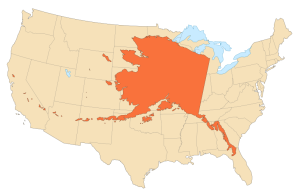
The size of Alaska is shown in comparison to the contiguous United States. Photo courtesy of: Eric Gaba – Wikimedia
TOP: Have you ever seen a polar bear and can you tell us just a little bit regarding the vast distances that these animals typically navigate across the tundra and in the sea?
SAM: Unfortunately, I’ve only seen Polar Bears in zoos and on nature programs. Where I live, in South Central Alaska, we have Grizzly Bears and Brown Bears. To see Polar Bears, I’d have to go about 900 miles north of here.
For reference, Alaska is the largest state by far. A favorite Alaskan joke is if you cut Alaska in half, Texas would be the third largest state. The map above depicts the vast expanse of Alsaska when compared to the contiguous United States.

Polar bear “Snow” is shown in her restricted confines at SeaWorld Orlando~ photo courtesy Colleen Gorman
Polar bears are known for their ability to swim large distances in the wild – their Latin name, Ursus maritimus, reflects the fact that they spend much of their time at sea. They are known to have home ranges anywhere from less than 1000 square kilometers up to greater than 300,000 square kilometers and have been observed traveling from 30 kilometers (20 miles) per day for several days in a row up to 80 kilometers (50 miles) in a single 24-hour period.
Zoo bears are confined to a tiny space compared to what they experience in the wild. And they are often kept in temperatures that greatly exceed the normal temperatures in their home environment. Thus when I see these magnificent animals in captivity, I can’t help but compare their plight to that of captive killer whales.
TOP: We recently posted a benchmark paper, “Keto and Tilikum Express the Stress of Orca Captivity”. Have you read the article, and did you work with the authors, John Jett, PhD, and Jeffrey Ventre MD?”
SAM: I worked with Drs Jett & Ventre while at SeaWorld. Absolutely, I have read the paper and it provides a terrific and sometimes horrifying look behind the scenes regarding orca captivity. I am grateful to Jeff and John for taking a stand on these issues which have never before been scrutinized with such detail and depth. The teeth and other health issues were alarming, even to me.
UPDATE from The Orca Project- March 08, 2011: The killer whale shows at Miami Seaquarium have been cancelled as Lolita is reportedly suffering from a tooth infection. Her status is currently unknown. Samantha released a statement concerning the lack of information coming out of MSQ regarding Lolita’s health and well-being. You can read her complete statement and get more information about Lolita by clicking HERE to read The Orca Project’s report on these latest developments.
TOP: The revelations in that paper, including the details of the pulpotomy procedure, were shocking to many of our readers, some of whom were formerly supporters of SeaWorld. As a former orca trainer, what specific details were you given about the drilling and irrigation procedures?
SAM: The necessity for the flushing was never explained to me beyond the basics of “food sometimes gets stuck in their teeth”. And I was never educated regarding the necessity for tooth drilling. In fact, I would bet that the term “pulpotomy” has just been introduced to all of the current orca trainers, via John and Jeff’s paper. I too observed that the procedure was very uncomfortable and painful for the whales. The animals would refuse to participate by sinking down in the water or by splitting from the trainer’s control.
TOP: In general, what are your thoughts about the paper? Are there specific aspects of the paper that were unexpected or “jumped out” at you?
SAM: To answer this question, I think it’s important to first give your readers a sense of what life is like for a trainer at Shamu Stadium. The single most important goal of a killer whale trainer is to get in the water with the whales and perform tricks with the whales in the Shamu Show. (SeaWorld prefers the term “behaviors” but they are essentially circus tricks).
When I was at Shamu Stadium, new trainers were responsible for the less palatable aspects of the job, including making up fish buckets, scrubbing algae, blowing leaves from around the pool, learning the speaking parts for the show, and counting respirations (the number of times each whale takes a breath) throughout the day and night. Many new trainers were stationed on “night watch” for weeks at a time, doing nothing but watching the whales as they slept and breathed. New trainers rarely had the opportunity to touch a whale during their first few months.
The way to move up through the ranks was simply to do what you were told and not ask questions. At the time I was there, it could take anywhere from 6 months to a year before new trainers would be allowed in the water, depending on the trainer’s previous experience. So I had a vested interest in not questioning my superiors, even if I did think that something was wrong.
Because I had worked at the Whale & Dolphin Stadium for 1 1/2 years before arriving at Shamu Stadium, it took about 6 months before I was allowed to swim with a killer whale. I went in the water for the first time with Gudrun.
New trainers at Shamu Stadium were not informed about the history of any of the killer whales at the SeaWorld parks. It was “learn as you go.” This was pre-internet days, so no one had access to information in the way we do now. If SeaWorld wanted to keep something private, it was kept private from everyone except the most senior employees. Senior trainers were well-trained themselves to speak only the party line. And I’m embarrassed to say that as I spent time at Shamu stadium, I learned to speak the party line very well.
Consequently, when reading the paper, I was startled to see explanations for many of the SeaWorld policies that didn’t make sense to me but that I had never questioned.
No wonder we were stuffing the fish full of antibiotics and antacids. The whales were getting ulcers and suffering from infections and inflammation secondary to the extreme stress caused by captivity.
I was also shocked to learn about the fate of two of the female orcas that I worked with, Gudrun and Taima, mother and daughter, respectively. I didn’t realize that Taima was bred at such a young age compared to killer whales in the wild and that she was basically a “breeding machine” having 4 calves by the age of 20. Taima gave birth to her first calf when she was 8, which is 6 or 7 years younger than a normal wild female orca is when she has her first calf.
While I worked at Shamu stadium I didn’t know that Taima was considered a “hybrid” since Gudrun was a “resident” type orca and her father, Kanduke, was a “transient.” Resident and transient refer to two culturally and genetically distinct types of killer whales, that don’t interact in the wild. They don’t even speak the same language!
Additionally, both Taima and Gudrun died due to complications of childbirth. Gudrun died on February 25th, 1996, just 4 days after giving birth to a stillborn calf and Taima died just last year (2010) in the process of giving birth to a stillborn calf.
When I looked over Appendix A in John and Jeff’s study, it made me angry to see “prolapsed uterus” as Taima’s cause of death, knowing how many babies she had been forced to produce by living in confinement at SeaWorld. I was also bothered that both mothers died as baby factories for Tilikum, the father of the stillborns. What is even more maddening is that Gudrun’s stillborn calf was physically winched out of her uterus. The dead baby was “stuck,” so they strapped it by the peduncle and pulled it out of her uterus by hand.
Finally, it was emotionally difficult to read about how SeaWorld consistently separates young animals from their mothers. In a previous TOP article, former trainer Carol Ray talks about witnessing the first “Baby Shamu” being taken from her mother. This is a gut-wrenching story that should be read by anyone who still thinks that it’s a good idea for killer whales to be kept in captivity: Read it HERE.
TOP: Samantha, it is known that you were at Shamu Stadium, SWF, on the day that Tilikum arrived. Can you tell us anything about the specific day, perhaps regarding the safety measures that were in place?
SAM: I was interviewed by Tim Zimmermann, author of “Killer in the Pool”, about witnessing Tilikum’s first days at Shamu stadium. You can access that interview HERE.
Back in 1992 when Tilikum arrived at SeaWorld (after Keltie Byrne’s death at Sea Land of the Pacific) he was definitely considered to be a highly dangerous animal by management and only the most senior people were allowed to work with him.
The basic rules for being around Tilikum were: no dangling objects for him to grab, wetsuits always zipped all the way up, no laying down next to him, and, of course, no one was allowed to get in the water with him. There was a perimeter line around the pool and only trainers authorized to work with Tili, or spot a trainer with him, were allowed to cross that line.
Ironically, while I was working at Shamu Stadium, I was never made fully aware of the circumstances surrounding Keltie’s death. As I said, this was pre-internet days, and I only knew what management told me. At the time, I didn’t understand why the rules were so strict with Tilikum. Of course I understand now – but what I still don’t get is why these rules were ever relaxed or modified considering his history of killing humans.
TOP: At The Orca Project, we have reviewed the circumstances of Keltie Byrne’s death at SeaLand of the Pacific, in 1991, including the accident report and the coroner’s inquest. We found that the circumstances of Keltie’s death were very similar to those of Dawn Brancheau. Careful review of the documents revealed that Keltie was actually pulled into the water and actively prevented from escaping the pool. It appears, after some scrutiny, that Dawn, Keltie, and Alexis Martinez did not lose their lives in accidents, but were killed, intentionally, by captive orcas. Are you familiar with these three events, and can you expand upon them, based on your knowledge?
SAM: Yes. After Dawn’s death last February, I realized that if someone with her experience could have been killed, then it could have happened to anyone working with Tilikum, including myself, had I stayed at Sea World.
I started to do some research about the circumstances of Keltie Byrne’s death. To my surprise, I did see a lot of similarities between Keltie’s and Dawn’s deaths.
Before Tilikum arrived at SeaWorld, management informed the animal training staff that Keltie Byrne died very quickly of hypothermia from falling into cold water without a wetsuit. We were told that it took trainers at the scene hours to retrieve Keltie’s dead body, which the whales, especially Tilikum, refused to give up because “the whales thought her body was a toy.” It was also implied by SeaWorld management that Keltie was an inexperienced trainer and thus the accident was her fault.
This description was only a partial truth, and the story was presented to the animal training staff this way in order to minimize what actually happened.
Like Dawn, Keltie was a very strong, experienced swimmer. Although Keltie did accidentally fall in the pool, she quickly tried to exit when one of the whales grabbed her and refused to let her out. Witnesses to the event saw her attempt to get away from the whales several times. They also described her coming up for air and screaming. The whales actively prevented Keltie from exiting the pool or grabbing the life-ring. To me, this implies intention on the part of the whales compared to the previous description which makes their actions seem more instinctual.
Based on management’s original description, I understood that Tilikum did nothing more than refuse to give up Keltie’s dead body. In actuality, he was a very active participant in Keltie’s death, NOT a passive observer.
Because Alexis’ death happened at Loro Parque in Tenerife, Spain, it wasn’t widely reported, and I only found out about his death after Dawn died. Alexis died on December 24th, 2009, two months before Dawn. This surprised me because I later learned that Keto, the whale who killed Alexis, was also an orca owned by SeaWorld. In fact Dawn Brancheau went to Loro Parque and worked with Alexis for a brief time helping to train the trainers and the whales. John and Jeff’s paper contains a haunting photo of Alexis and Dawn together taken less than a year before both of their deaths.
The evidence shows that Alexis was violently attacked by Keto, resulting in serious trauma and eventually death. To quote from one report:
“According to the analysis, the immediate cause of death was a “pulmonary edema”, while the fundamental cause of death was “mechanical asphyxiation due to compression and crushing of the thoracic abdomen with injuries to the vital organs”. The examination not only reveals multiple fractures – “the entire anterior rib cage”, sternum, ribs – and injuries – “bruised lungs with rips in the pleura”, and “liver with a wide tear”.
(You can read more about Alexis and Keto HERE.)
SAM continues: Dawn’s autopsy report reveals similar evidence and even worse damage to her body than Alexis sustained. Her sternum was fractured, which requires an incredible amount of force, and her left arm was torn off and held on only by her wetsuit. And finally, at some point during the attack, she was scalped, which is a fact conveniently exploited by SeaWorld to later insert the “pony tail theory,” but more on that later.
Clearly none of these three incidents qualify as an “accidental drowning”.
TOP: It appears that SeaWorld, Sealand of the Pacific, and Loro Parque, all would have a vested interest in minimizing the deaths of their trainers. Would that explain why these marine parks all claim these events were “tragic accidents”?
SAM: Of course they would want to minimize the deaths by claiming in each case that not only was it a tragic accident, but that the trainer involved was somehow at fault and the accident could have been avoided if the trainer hadn’t made a mistake.
SeaWorld likes to ride the line between killer whales being highly dangerous, extremely intelligent animals and at the same time claim their trainers are so well trained that the risk is minimal. Of course this stance has a purpose because it fuels the perceived drama and intensity of their shows. It also builds the mystique around the “special relationship that killer whales share with their trainers.
TOP: The document below, from a 2006 Press Kit developed and distributed by SeaWorld, clearly shows their knowledge of the dangers associated with working with orcas. Click on the document to enlarge or click HERE to download the entire Press Kit (18 pgs) in PDF format.
SAM: The truth is there’s nothing “accidental” about what happens at SeaWorld or other marine parks when trainers get injured by killer whales. The deaths of these three trainers are the inevitable result of what happens when you confine these animals to a small space, deprive them of their family, and subject them to the stressors that Jeff and John discussed in their paper. We can expect to see more deaths and injuries as long as we continue to keep killer whales confined in small, concrete facilities.
TOP: Samantha, is it your feeling that trainers are somewhat kept in the dark at SeaWorld regarding things like pulpotomies, inbreeding, animal health issues, and the real risks of working with large predators like killer whales, or walrus?
SAM: Yes. Based upon my own experience at SeaWorld I would have to agree with this statement. Because of the internet, I actually know more now about the dangers of working with killer whales and other animals than I did when I was training orcas for SeaWorld. Kind of ironic, huh?
For example, I started working at SeaWorld in 1990, a few years after trainer John Sillick was crushed between two orcas during a show performance in 1987 in San Diego.
Despite the fact that this happened 3 years before I started at SeaWorld, the first I learned about this incident was when my husband happened to be sitting on an airplane next to John Sillick’s sister and she told him all about what happened to John.
Of course I was curious to learn more, so I asked other trainers in Florida about what happened, and they couldn’t tell me very much beyond the fact that the accident had led to trainers being pulled out of the water with the animals for several months while management reviewed its policies.
I finally watched the video after Dawn’s death. The first time I saw Orky 2 land on John, I actually gasped. Not only am I amazed that Sillick survived, but I am equally shocked that SeaWorld management didn’t think it was necessary to show the video to all of its trainers to ensure that we would learn from past mistakes.
From the internet, I also learned that the animal involved in the accident likely had some visual and other health problems that his trainers didn’t know about. There is a gag order surrounding Sillick’s lawsuit, so we may never know how much the veterinary staff and management staff knew about Orky 2’s health versus what the trainers working with him knew.
(Note: You can view a list of other accidents between whales and their trainers HERE.)
Based on this list, I count at least 30 incidents worldwide that happened either before or during my time at SeaWorld.
And these are only the accidents that were officially reported. I have no doubt that there are more based on the unreported incidents I knew of while I was working at SeaWorld of Florida. Yet, the only issues I knew anything about in detail were interactions that I actually witnessed while I was at the park.
Similarly, when I worked at the Sea Lion & Otter Stadium, I heard stories about walruses that had attacked trainers with their tusks (which explains why some of the animals had their tusks removed) and trainers that had been bitten by sea lions or otters. At Whale and Dolphin stadium there were trainers being injured by dolphins and false killer whales (aka Pseudorca crassidens).
In legitimate industries, like the airlines or medicine, for example, there are protocols for discussing mistakes and accidents and there are oversight procedures to ensure that these mistakes do not get repeated. In medicine, these “big accidents” are called “sentinel events.” I never saw this type of oversight at SeaWorld.
TOP: Do you feel that Dawn, Keltie, and Alexis may have been able to make safer decisions while interacting with killer whales if trainers were more accurately educated about the true histories of orca-trainer incidents and the potential for death and injury?
SAM: Marine parks around the world should be responsible for informing and educating trainers about the potential risks of the job, and there should definitely be protocols in place to review mistakes and keep the trainers who work with killer whales up to date on the history of all the animals.
As far as the specifics of each situation – I think the only thing that would have saved Keltie would have been if there had been some kind of non-stick surface on the deck to prevent trainers from slipping, or some kind of barrier system in place.
I don’t know enough about Alexis and his history to say what he did or did not know about Keto, but I’m confident that he was, like me, unaware of at least some of the risks he was taking. For example, Keto’s father, Kotar had displayed aggression towards his trainers at SeaWorld in the past. I doubt Alexis knew anything about this. By the way, Kotar died in 1995 from a metal gate crushing his skull, but his cause of death was reported as “acute hemorrhagic pneumonia”,
As for Dawn, she was the most experienced trainer of the three, but even she was likely not aware of some of the history of the whales she worked with. I imagine that if there is a lawsuit filed against SeaWorld on behalf of Dawn’s family, then what she knew or didn’t know and how it likely influenced her choices might have a chance to come to the surface, provided Sea World in not successful in closing the hearings to the public.
TOP: Do you believe withholding information from trainers could make marine parks culpable for these deaths?
SAM: Absolutely. It’s impossible to make safe decisions without being provided access to all the relevant data that’s needed to make them. Access to that type of information may have saved Dawn from a brutal and tragic death at the hands of a stressed orca who was heavily medicated at the time. Even the most talented intuitive animal trainers need to know the history of the animals they work with to make the best choices possible, not only for the sake of the animal but also for their own health and safety.
TOP: There is evidence that Tilikum was in the process of learning to “accept” trainers in the water with him. Why might this have been going on with Tilikum and also how might that have impacted Dawn’s comfort with the big orca as she got into the shallows with him?
SAM: When Tilikum first arrived at Shamu Stadium, there was a heated debate regarding whether it would be safer to train Tilikum to accept having trainers in the water, so as not to have another “Keltie Byrne event,” or whether the danger of putting a trainer in the water was too risky.
Killer whales at SeaWorld are trained not only to ignore objects or people that accidentally fall in the water, but also to return to the “control trainer” at the side of the pool. What this means is that a trainer outside of the water can slap the water with a hand or sound an underwater tone, and the whale will stop what he or she is doing (even if the whale is interacting with a trainer in the water) and come to the control trainer on deck for a reward. This is also known as “water desensitization” or simply “water desense”.
While water desense works in theory, it usually fails in real circumstances. There are many publicly available examples of “well-trained” killer whales refusing to come to their control trainer. Here’s a video of killer whales attacking a pelican at Shamu Stadium in San Diego – note that the whales ignore the control trainer despite repeated requests for the whales to return to the stage. If you watch the video below, make sure to read the comments from the camera operator.
Ultimately, in Tilikum’s case, management decided it was too risky to put a trainer in the water with him.
In July of 1999, after Tilikum had been at Sea World of Florida for 7 years, a man named Daniel Dukes hid in the park after hours and decided to go swimming in Tilikum’s pool. The next morning his dead, naked body was found draped over Tilikum’s back. You can read a great depiction of these events in Tim Zimmermann’s Outside Magazine article, “Killer in the Pool“. There may have been some discussion at the time about whether or not Duke’s death could have been prevented if Tilikum had been trained for waterwork and water desense, but we’ll never know.
I have no idea why management reversed their original decision (of no water desense training) thus creating the circumstances for Dawn being in the shallows with Tili. But we do know that that decision killed her.
TOP: Thank you Samantha. This Concludes part 1 of our interview.
In Part 2 of our interview with Samantha, we take a look into SeaWorld’s secretive breeding program and uncover the “educational” value of marine mammals on display. We also go into the details of why SeaWorld’s proposed safety improvements will not work… and take an explosive, in-depth look at what happened the day of Dawn Brancheau’s tragic death. This is an interview you will not want to miss! You can see Part 2 HERE.
————————————————–
And be sure to check out our other former trainer interviews:
Exclusive Interview #1: Former SeaWorld trainer John Jett PhD talks Tilikum with T.O.P.
Exclusive Interview #2: Former SeaWorld trainer Carol Ray talks orca safety & separation with T.O.P.
For more information and exclusive content, visit Samantha Berg’s page HERE at Voice of the Orcas, a new website created by four former SeaWorld trainers, sharing a common philosophy to provide a voice to those without.
To be notified via email of new posts at The Orca Project, including future exclusive interviews, you can click on the “Subscribe” button for an email subscription (located along the right side of this post) or join us on FaceBook.
Trackbacks
- The Greatest Show on Earth? | The Match
- SeaWorld’s Proposed Multi-Million-Dollar Safety Gimmicks Don’t Measure Up | The Orca Project
- Marineland of Canada Exposed: Former Animal Trainers Discuss Lawsuit in Exclusive Interview | The Orca Project
- Judge Rules Morgan should be moved to Loro Parque ASAP. « The Orca Project
- SeaWorld vs. OSHA- Killer Whale Showdown in Florida « The Orca Project
- Killer Whale Tilikum Returns to SeaWorld Shows After 3rd Death « The Orca Project
- The Truth about Lolita…? « The Orca Project
- SeaWorld’s Proposed Multi-Million-Dollar Safety Gimmicks Don’t Measure Up « The Orca Project
- Exclusive Interview #2: Former SeaWorld trainer Carol Ray talks orca safety & separation with T.O.P. « The Orca Project
- Exclusive Interview: Former SeaWorld trainer John Jett PhD talks Tilikum with T.O.P. « The Orca Project

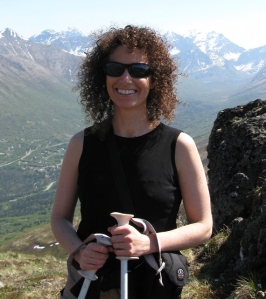
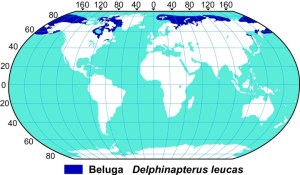


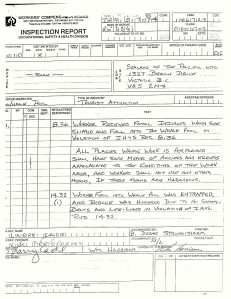

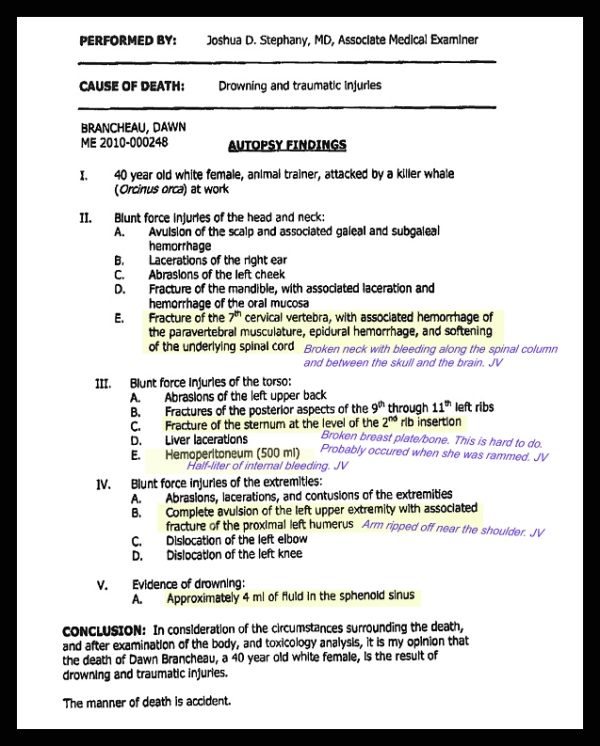
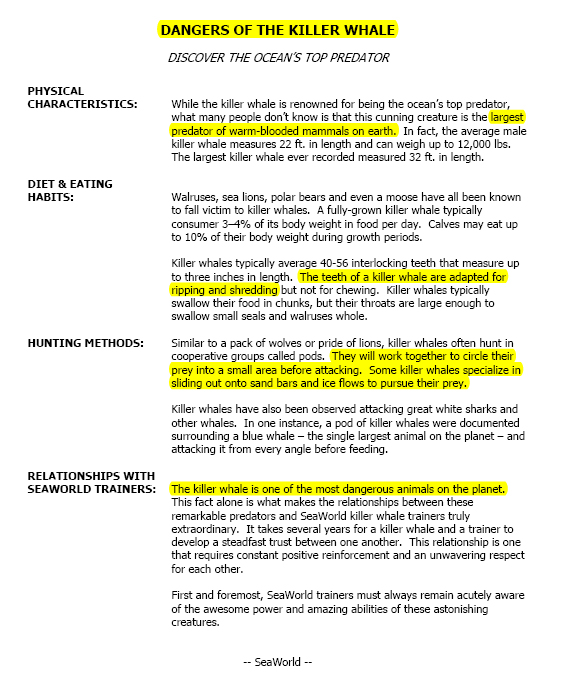

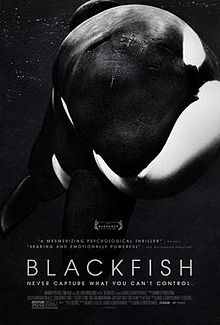
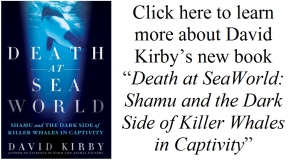

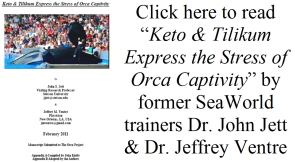
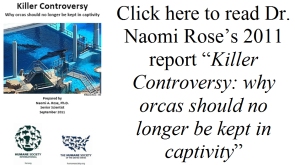



Having read this I thought iit was extremely informative.
I appreciate you taking the time aand energy to put this informatrive article together.
I omce again find myself spending way too much time
both reading aand commenting. But so what, it waas still worth it!
Someone essentially assist to make severely posts I
would state. This is the first time I frequented your website page and up to now?
I amazed with the research you made to make this particular put up incredible.
Wonderful process!
Would you be willing to have your photo of Orca Gudrun and Orca Taima being posted on wikipedia? a free website?
But it won’t do anyone any good unless you can attract
readers to your articles. This is someone who can make lemonade out of lemons.
One of the benefits with using these marketing tools is they are
among the easiest to measure.
I think all of you should read Death at SeaWorld by David Kirby. It was an amazing read and really informative. A lot of information is including from Naomi Rose and former trainer Jeff Ventre, MD.
If you’ve done office parties or corporate work, make sure to mention that as
well. Think of this as a way to document your improvements over time, and eventually it will be a very effective PR tool.
He represented his homeland in four Olympics and is a three-time indoor world champ in the 1500 meters.
All animal captivity for the sake of entertainment seriously needs to come to an end, there is no reason why Seaworld and places like that should even exist!
Spectacular street view of The Whale and Dolphin Stadium in SeaWorld Orlando http://www.topworldimages.com/streetview/SeaWorld_Orlando
i hate it when people get killed by killer whales its soooo sad
Interesting but a sad read. Do you think Tili knows what he has done and feels remorse after? I’m wondering because of the “bonds” they have with the trainers.
Goes to show, MONEY is all SeaWorld cares about. Want to see more secrets. For years, SW’s killer whales were gotten thru hunts that used helicopter and explosives. So a few whales died, SW got their whale and that was all they cared about. Greedy, greedy, hypocrite SeaWorld. It’s purely a money making machine, with conservation PR now and then to get your mind of what they are really doing. http://www.10news.com/news/13334667/detail.html
Probably off topic, but I find it interesting how clever the company is in “training” the young “whale trainers.”
Sorry to say , but ultimately, if the payoff for any mishaps is small enough in relation to the profits of the company —- a mere death here or there is just the cost of doing business.
In a fictional world, humans are so controlled by fear of failure that you can manipulate them.
Even if you kill a relative or friend, you could buy their silence. NOT because a survivor does not care, but because it is a “Dog Eat Dog” world and we are all basically animals fighting for our survival.
Why would anyone be naive enough to think this company cares about the well being of another species when ultimately it demonstrates a lack of actual caring for the well being of its human employees?
How right! Looks like SeaWorld uses everyone, people and creatures alike to make profits for themselves. It’s purely an amusement park – NOTHING else! don’t let their conservation crap fool you.
On the train this morning, I spy a news story over someone’s shoulder…Seaworld have got their way. Trainers are back in the water as from today.
Money Money Money…that’s all it is…back in the water with the wolves of the sea, only a matter of time before it happens again…
In the article I read it said that they would start slowly, as in getting in the medical pool in shallow water and spend months progressing up to appearing in shows.
It WILL happen again, people forget that they never went in the water with tillikum, he grabbed her from the pool edge. It could still happen again today with any other whale even if they never went back in the water again.
They were always planning to go back in the water, they were just waiting for an appropriate lenth of time to pass.
Yeah I saw this later on, I didn’t have a paper of my own to see the full details 🙂
It’s disgusting how they are getting away with this. Their so called safety measures are ridiculous. Spare air…how does someone breathe spare air when a whale is thrashing them around at terrifying speeds?
Not to mention the obvious flaws of breathing spare compressed air when down so deep only for the whale to rush the person back to the surface again.
and those “safety rails”….need anyone comment?
Sooner or later they will be back riding them around like living surfboards once more…
The temperature in the pools at Sea World are kept at 22 * F
May I ask where you got this info is from? Because a USA Today Travel Tips stated their water is “52°-54°F” (http://traveltips.usatoday.com/swimming-belugas-seaworld-orlando-18536.html) and another review from ’08 of the beluga interaction program stated it is around 50°-ish (http://www.themeparkinsider.com/flume/200808/877/).
If that’s the case, then the water is still a bit warm for the belugas, but I don’t think they’re going to lower it since they’re doing the interaction/trainer for a day program. You can’t have your paying customers suffer from hypothermia if it’s 32°F or lower!
*Travel Tips article
I was visiting SW of Texas shortly after Kotar jumped out of the pool TWICE as stated by trainers that worked at the park told me.
This one is also a shocker, from Samantha, “By the way, Kotar died in 1995 from a metal gate crushing his skull, but his cause of death was reported as “acute hemorrhagic pneumonia.”
SeaWorld has conveniently stated in the MMIR that Kotar died of acute hemorrhagic pneumonia, which, while technically true, is misleading. Translation: Kotar died of a crushed skull from a pneumatic gate… resulting in blood flooding his lungs. This implies that his death was likely similar to Kandu V, who was spouting blood from her blowhole. Sad to think of that happening to yet another captive whale, like Kotar. It is also widely known that Kotar jumped out of Shamu Stadium in Texas, and that to get him back into the pool, they raised the water levels and flooded the entire stadium, including the area in front of the glass, where he landed on the sidewalk.
Do you know when Kotar happened to leap out of his tank? I’ m trying to find any news article about this event and I’m not turning up with anything . This is the first I’ve heard about a SeaWorld orca jumping out of his tank (I know Hudson in Marineland Canada did that around late 2002, but I think Nootka V was behind it due to her aggressive tendencies towards him).
” It is also widely known that Kotar jumped out of Shamu Stadium in Texas”
really????
I’ve often wondered / asked what would happen if one of the orca jumped out of the tank like i know several dolphin have done, and i’ve always been told it has never happened and if it did the whale would die.
where did you find out about kotar as i’d love to find out more about it. (and also about what the other poster said about hudson)
thanks.
J, I was told Kotar exited A pool as, sadly, a former trainer for the SeaCircus. I was working for SWF when it happened. So word of it was passed along to me like this, “Damn, did you hear that Kotar jumped out of the pool, and they had to flood Shamu Stadium?” I later learned that Kotar would jump up on the A pool glass and “rock” back and forth, while balanced on it. Could you imagine? That was an animal that got people’s attention from day one.
thank you
I googled it but could find nothing about kotar jumping, and only a few lines about hudson.
thanks for that
I read about Hudson’s episode on Orcahome.de right here :
http://orcahome.de/news2002.htm
Good ol’ Holder said Hudson was just being a youngster, but he had to be separated in December ’02 after it was mentioned that Nootka V was showing aggression towards him (mentioned on 10/16/2002 post: http://orcahome.de/news2003.htm ). Sad how he had to be split from his mother Kiska as well.
I’m quite disturbed and angered on how the belugas were kept in 70° F water in the 1990’s; you’d think SeaWorld, with all their medical and zoological knowledge would know better to keep them in very cold water. It’s no wonder the belugas Samantha named are all dead, probably due to illness brought on by the too-warm water.
It reminds me much of Keiko’s dilemma when he was kept in 70°~80° (and highly chlorinated!) water in Reino Adventura, which was meant to keep the bottlenose dolphins he shared his tank with happy.
I assume the temperature has been lowered to a more comfortable, more colder temperature for them now, in the 2000’s/2010’s – can anyone confirm this?
So much for SeaWorld caring about the animals, and ”rescuing” them eh?
I have a video on disc of this exact same thing happening to a pelican at San Diego SW taken by a friend of mine, but think it was a different date. Trying to confirm date and will get back to you.
If you find it, we’d love to see it! Thank you My2cnz.
Orcaproject, please email me.
I forgot to say – I also liked the bit about polar bears, I’ve had many arguments with people on zoochat.com about this issue (where i have also had many arguments about orca in captivity).
I am agaisnt them being in captivity for the reasons you mentioned (temperature and space).
all cetaceans, polar bears, elephants and a few other animals should be illigal to be kept in captivityas they are just not suited to the enviroment.
Wow, a trainer has openly talked about the whole teeth drilling bussiness.!!!! Diddn’t think that would happen.
And it was intresting reading about dawn’s injuries and how much SW have covered up.
An incredible, informative article.
keep up the brilliant work. Cant wait for part 2.
It’s so good to see that the truth actually is being revealed and it clearly shows without a shadow of a doubt that these top predators should never be put in captivity unless it is for rehabilitation purposes. They are predators and they certainly do not deserve to be in a concrete pool!
Thank you for sharing the truth about Sea World and why these amazing Mammals belong in the wild. We’ve all known, all along … but to have facts in writing seals the deal.
Hopefully people will begin to ‘put their $ where their mouth is’ and boycott these parks.
Boycott today. Not after vacation …
Incredible interview Samantha and The Orca Project!!! Wow. Standing by for part two.
Wow there is a lot of jaw dropping info in here. The information in here on its own is enough to clearly understand that it is time for orca captivity to come to an end. Part 2, please.
WOW~ The truth is coming out. Thank you TOP and Samantha!